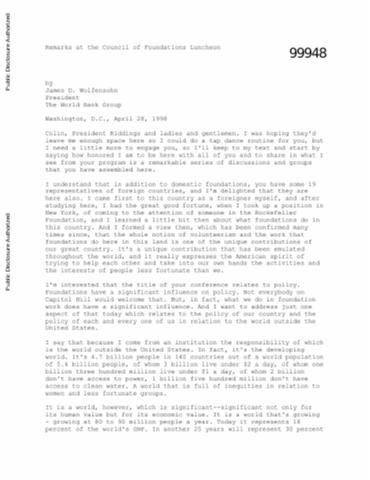Remarks at the Council of Foundations
James D. Wolfensohn, President of the World Bank Group, discussed the issues that link the United States to other countries: health, migration, trade, peace and stability, energy, food, and crime and narcotics. The responsibilities of foundations do not end with our cities and communities. The job the Bank does can only be done on the basis of partnership with the governments, with the other multilateral institutions, with the private sector, but most particularly with civil society.


